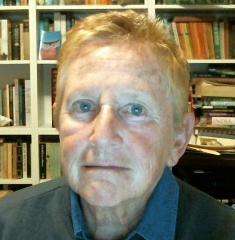Haydn’s The Creation (Die Schöpfung), which premiered before the public in Vienna in 1799, is a staple offering in the modern choral scene, for reasons easy to identify. While inspired by Messiah and other Handel oratorios, it finds its own unmistakable voice and is the opposite of the ponderous “gentility and conventional sentimentality” so scathingly ascribed by George Bernard Shaw to Mendelssohn’s Elijah. Rather, it is as fresh sounding now as when it was written, fleetly and compactly highlighting the joys of the Biblical account of the first week of the earth.
The English libretto (sung here, and also appearing in subtitles) has a few problems, arising from the first libretto being written in German by Baron Gottfried van Swietan but being based on the English St James Bible. It was then translated back into English for the final 1800 bilingual publication. It is not surprising that the English version has some ponderous turns of phrase, and people are always tinkering with it, or choosing to perform the German version. In this performance, a certain tinkering was evident, but the soloists carried off the English version with immaculate diction all round, and by singing with conviction and authority.
The performance featured a background of digital light effects – attributed to the Nina Dunn Studio – which could not be fully appreciated (or otherwise) on screen, as one could rarely get a good look at them. The dawning of the light engendered a sort of stargate effect, and – no surprises here – mentions of “verdure” flooded the electric backdrop with greenness, and birds were suggested by flying shadows. In the last scene a more naturalistic greenery of lush ferns and branches dominated.
A significant aspect of the event was that it represented conductor Laurence Cummings’ first appearance as the artistic director of the Academy of Ancient Music. His previous roles included music director of the London Handel Orchestra, the London Handel Festival and a brilliant run, only just now finished, as artistic director of the Göttingen Handel Festival. Given his perfectionist approach, but with attention to meaning and feeling and a deep engagement with 18th-century music, his new role could hardly fail to achieve great success with the AAM and this concert confirmed that expectation. The period instrument orchestra played with precision and brilliance in all departments. Mention must be made of the lovely flute work from Rachel Brown, especially in Gabriel’s “On mighty pens uplifted”, and Uriel’s recitative “In rosy mantle” heralding the arrival of Adam and Eve. The choir was sprightly and well-coordinated, but seemed to lack clarity at times.
The vocal soloists, mostly English, are generally well known and polished in this kind of repertoire. Soprano Mary Bevan sang with precision and a range of colours in her voice as the archangel Gabriel. The other angelic roles were well taken by bass-baritone Matthew Brook as Raphael – a model of controlled resonance – and tenor Stuart Jackson as Uriel. Adam was sung by baritone Ashley Riches bringing a warm presence to the role vocally and dramatically. For me, the revelation was Scottish soprano Rachel Redmond, who brought a lovely smiling gracious presence to the role of Eve, and sang with a pure sweet sound and technical excellence, exemplified by her messa di voce on the opening word of “Spouse adored”, maintaining swelling straight tone, with light vibrato infused at its end. I for one look forward to seeing more of her in the future.
This performance was reviewed from the Barbican's video stream


